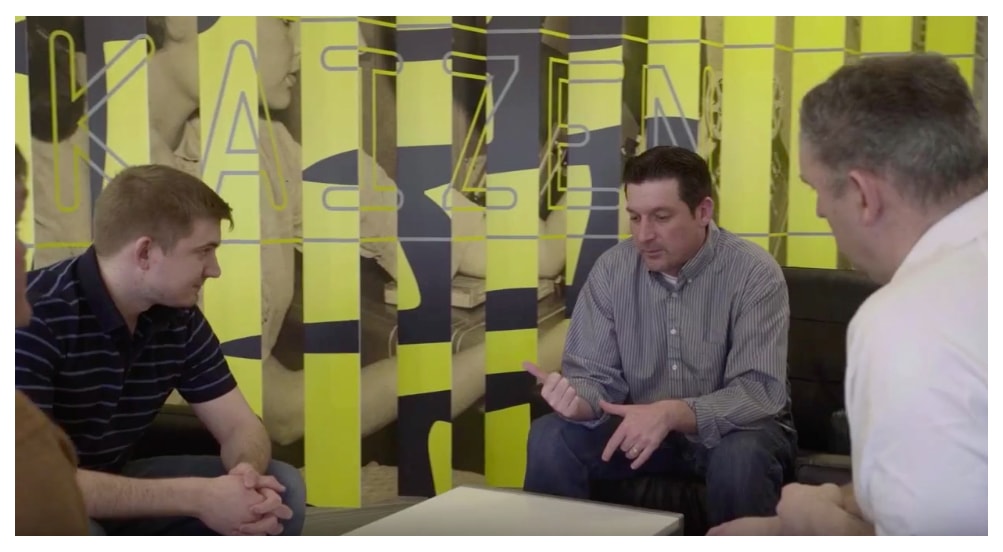Five years ago, Deacom founder Jay Deakins, went for a routine run in Valley Forge Park and came back with an idea that would revolutionize his company’s ERP software.
Even though the company was doing well at the time, he realized a change needed to be made in order to keep the product as dynamic as the industries it served. Something that would encourage ongoing development and never leave customers “stuck” in outdated technology. He needed to make moves to rewrite the software on a more flexible and scalable framework and was willing to risk investments in time and resources to reap even greater rewards.
As the company began to grow and add new members, a team of developers embarked on the company’s most critical project to secure the future of Deacom’s growth: A major software migration to a .NET platform.
At the time, the company was using Microsoft Visual FoxPro to build its software system — the same system Deakins used to start the software company in his basement 15 years prior. Though the platform was perfect for the first phase of Deacom’s growth, with a database engine, user interface and other facets that made it ideal to build a software system, Deakins determined it would not be a viable option for the company in the long haul.
“We work primarily with manufacturers within the U.S. and they have high expectations when it comes to their technology providers,” Deakins said.
He continued to explain how the company takes a different approach to development than the bigger players in the enterprise software market, like SAP and Oracle, who customize their software for individual customers. “This strategy tethers software platforms to existing technology stacks, preventing their evolution and limiting their customer’s ability to adapt to new industry and technology trends,” Deakins said.
“Deacom takes a unique path by developing a single piece of software where all customer requirements are built into the base code,” he added. “Since our .NET conversion began, we have been able to evolve with fast-paced trends quicker than our competitors.”

The project focused on both migrating the business logic and giving the user interface an overhaul. The migration of business logic was the most time-consuming phase, essentially requiring over 6 million lines of code to be moved from one platform to another, all while ensuring the same functionality so customers weren’t left hanging in the middle of the overhaul.
In fact, their customers played a large role in this project. Throughout the years, Deacom offered them the ability to preview the .NET version in their own environments. This feedback helped put the finishing touches on the platform’s user experience.
In updating the software, Deacom would now be poised to continue growing while also attracting the very best talent with its technology.
“We recruited strong developers through standard job boards but we weren’t looking for any specific type of experience,” said Sheridan Bulger, Deacom’s Software Operations Manager. “Rather, we hunted for developers that had an outstanding handle on basic development structures so they could flow between languages without any issue.”
It was also important that members of the software migration team could easily shift gears between the project and other daily work. Bulger said the potential to work on a modern development platform was and continues to be a huge draw for attracting software developers.
“We started the project with just 18 employees total and today we are growing at over 110, 24 of which are developers,” said Bulger. “Development candidates want to work on a modern platform to hone skills and be marketable in the future. Working on outdated platforms can be a career-limiting move.”
And actually, they’re still hiring.
See the jobsPlus, Bulger added: “As new ideas and concepts came up during the project, we encouraged our team to run with it. Not one person has all the answers. So, it’s important that we keep open minds and explore all of our options.”
This approach also fits into Deacom’s overarching application of the Kaizen philosophy, a way of thinking that strives for continuous improvement and forward thinking during all stages of growth.
“We aren’t interested in making quick fixes to our software so we can move onto the next project,” said Deakins. “This strategy is unsustainable and negates everything we are built upon and have been working towards. Instead, we invest a lot of resources in making continuous efforts to improve our software, business practices, and our employees’ career development. This is what our entire business is built upon and what will keep us focused on innovation as we move forward.”







